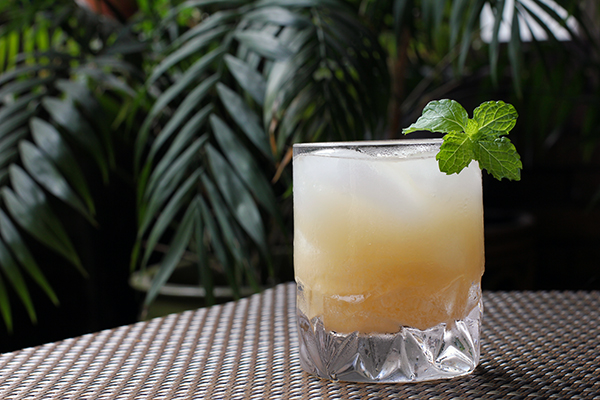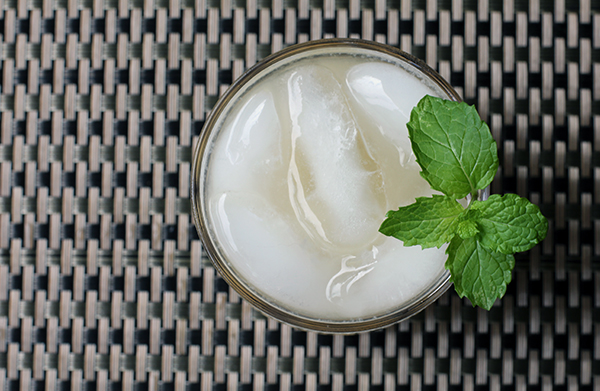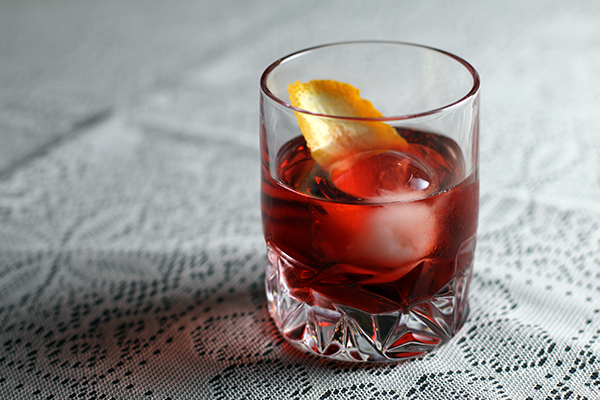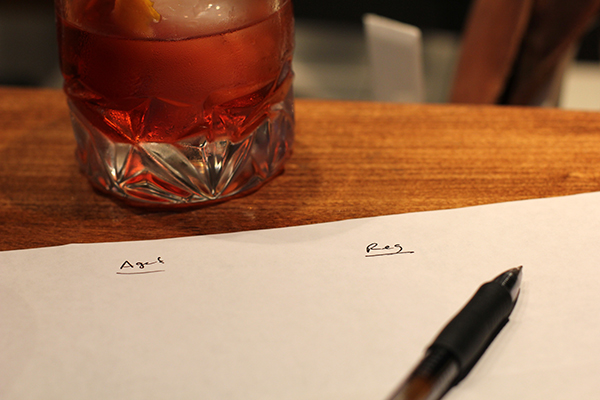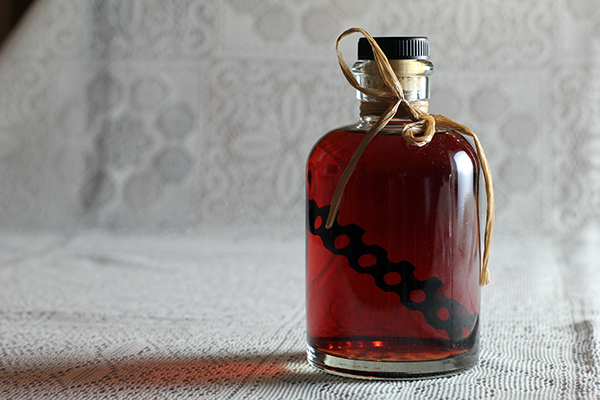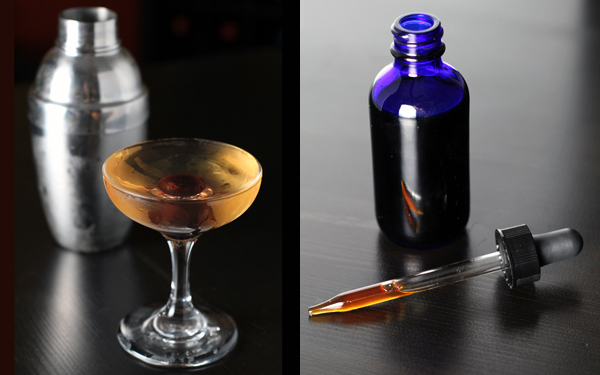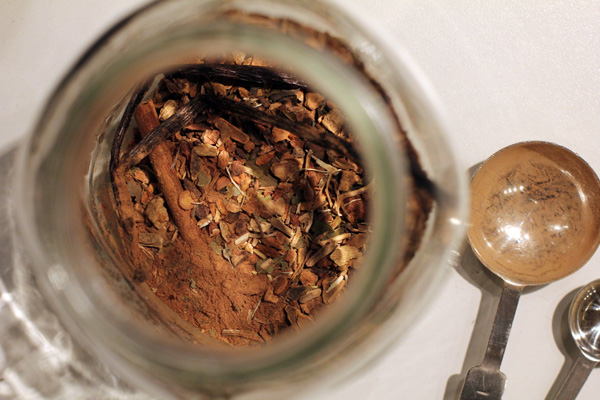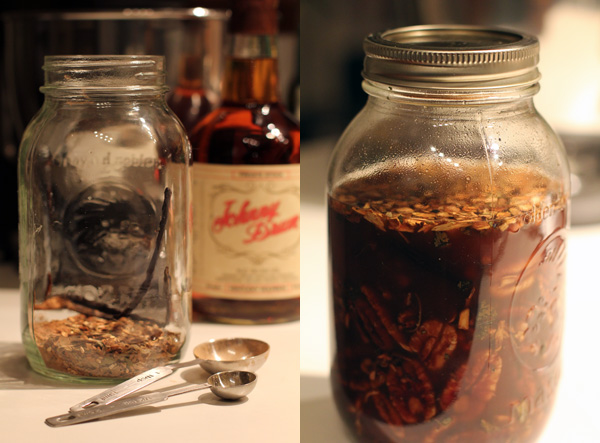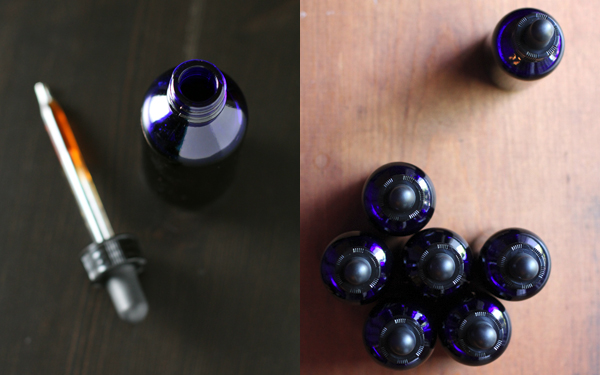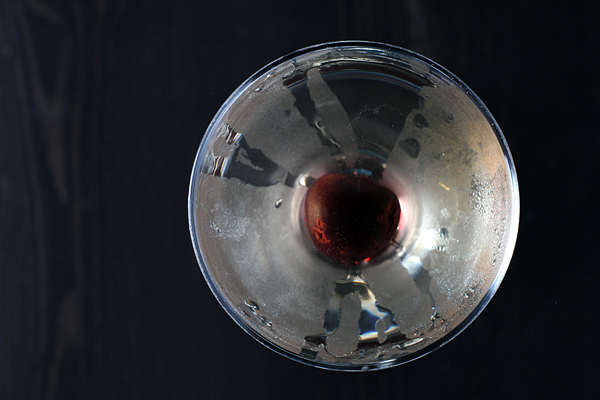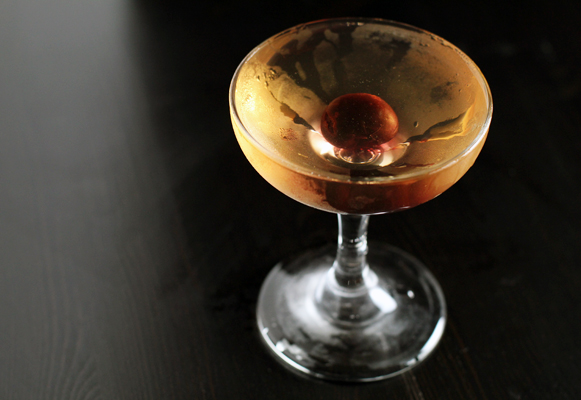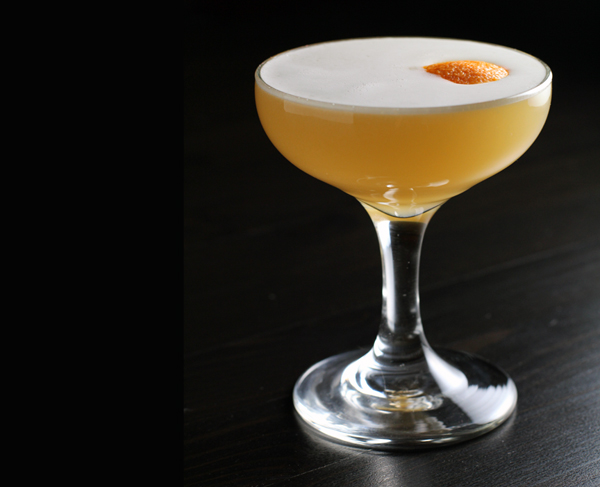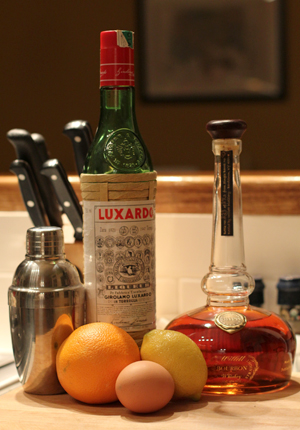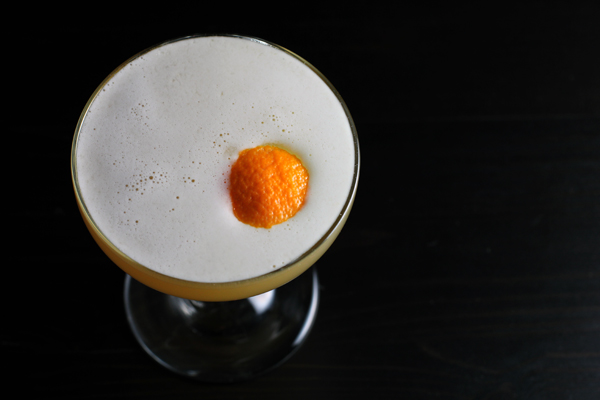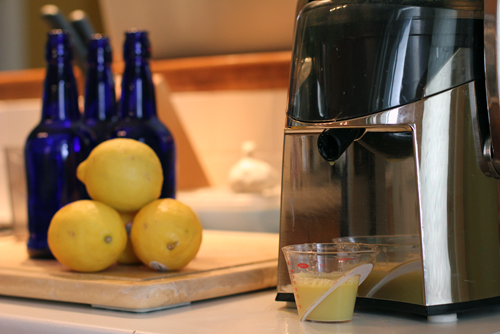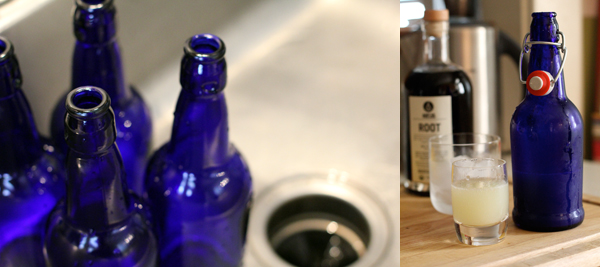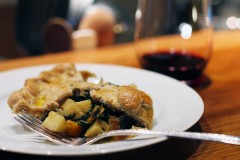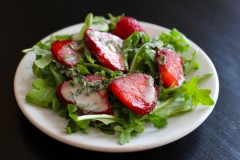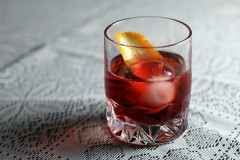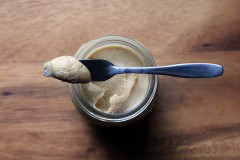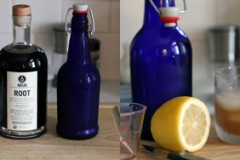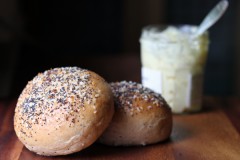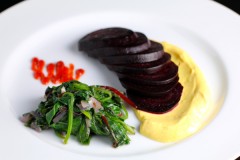From the time I sipped a few overly sweet and garishly garnished poolside tropical mutations until I tracked down and mixed their simpler, more elegant classic antecedents for myself, I realized that somewhere along the line these drinks had been given a bad makeover. Though I didn’t bother to dig into the when or why this happened, promptly deeming it beyond my declared scope of work, I’m going to go ahead and blame it on America’s world-renowned sweet tooth, which seems to have developed sometime during the 1970s when lots of awful things were allowed to happen. Some good things were happening in the 1940s, however, when Trader Vic codified his original Mai Tai recipe, which I used as my guide for the drink that follows. Fans of the pineapple slice, maraschino cherry, dark rum float, and umbrella as adornments in their Mai Tai may be taken aback by the simplicity of a single sprig of mint as garnish, but like classics in any art form, the original can always stand on its own.
Mai Tai
1 1/4 oz. Appleton Estate V/X
3/4 oz. Smith & Cross
1 oz. Lime Juice
1/2 oz. Orange Curaçao (or Clement Creole Shrubb, if you have the means)
1/2 oz. House Orgeat
Mint sprig for garnish
In a mixing glass, combine the lime juice, orange curaçao, and orgeat, then add the rum. If you’re experimenting with rum splits, mix those separately and taste until you’re happy with the outcome. Shake with ice and strain into a chilled rocks glass filled with ice. Garnish with a mint sprig.

